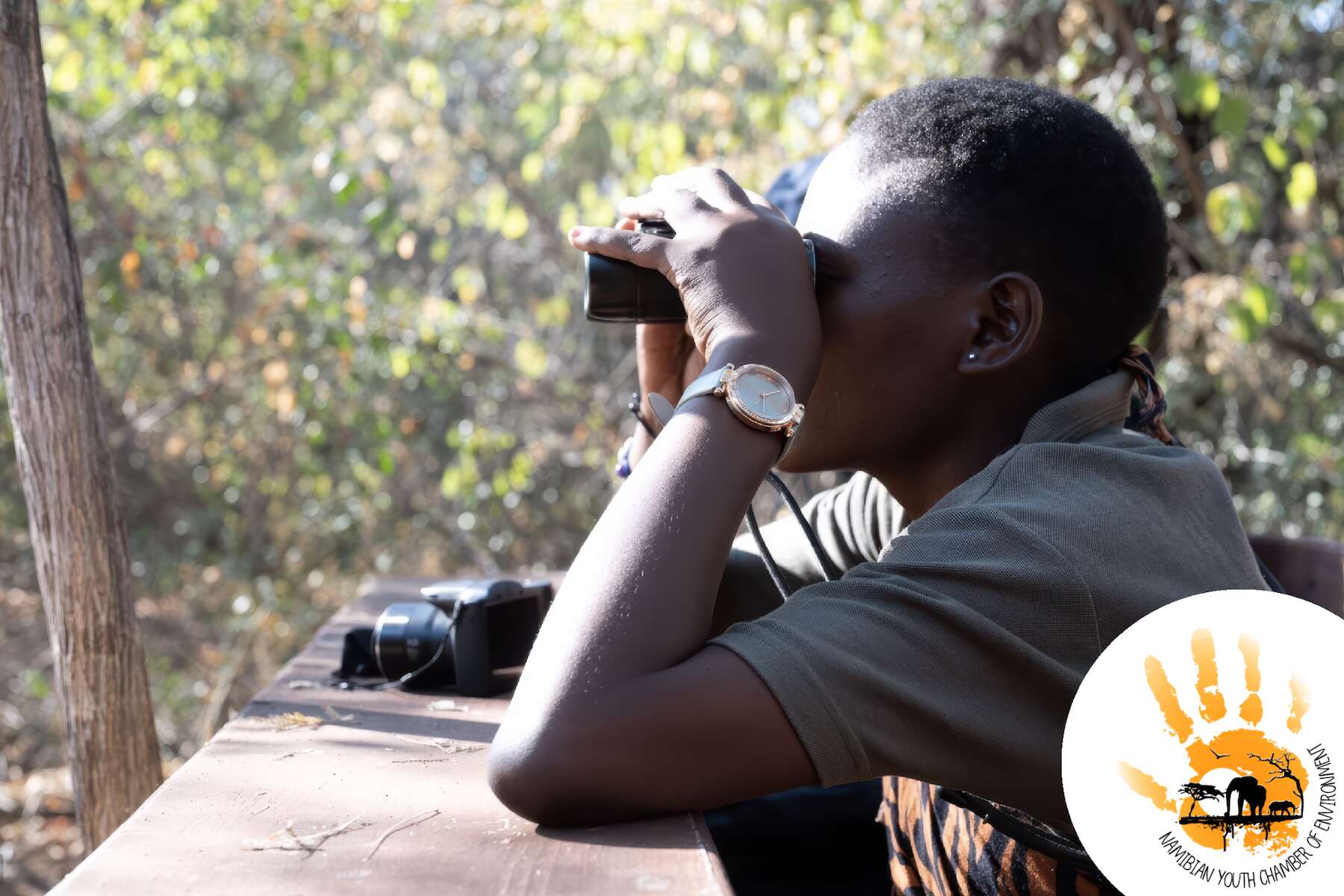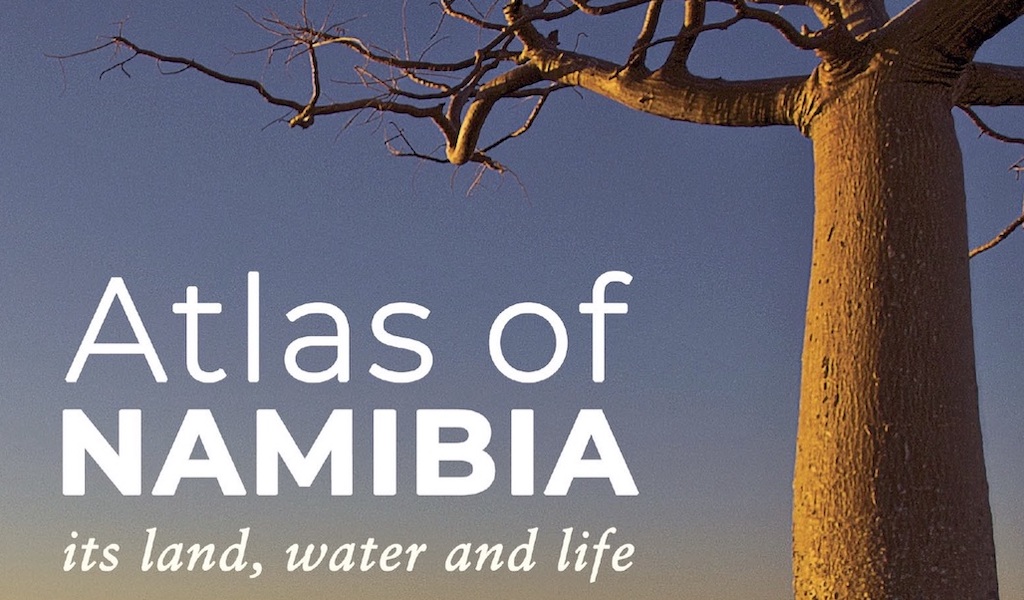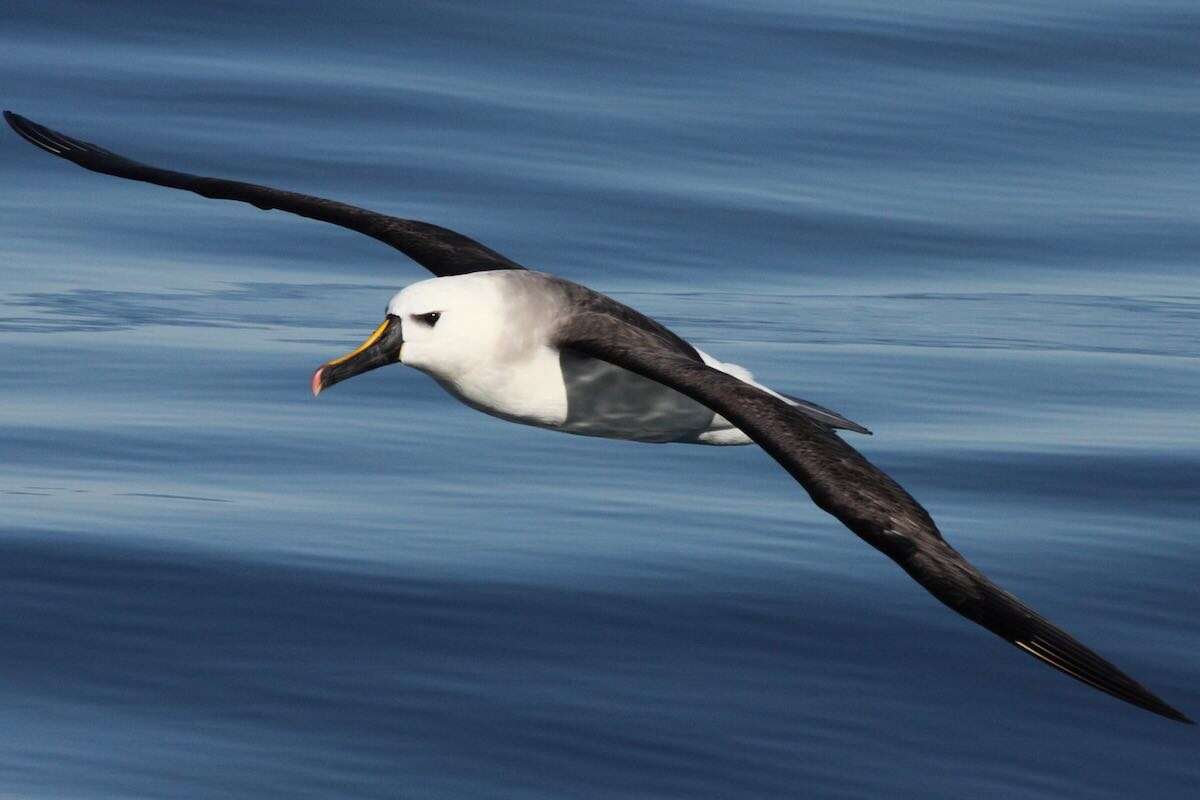Author profile

Gail C. Thomson is a carnivore conservationist who has worked in South Africa, Namibia and Botswana on human-carnivore conflict, community conservation and wildlife monitoring. She is interested in promoting clear public communication of science and conservation efforts in southern Africa.
Conservation Namibia bibliography:

Discovering the secret sauce of rhino conservation in Namibia's communal conservancies
Namibian Chamber of Environment
Why are the free-roaming black rhinos in Namibia's northwest safer than rhinos elsewhere? What is the 'secret sauce' for rhino conservation here, and can it be applied elsewhere and to other species? The team from Save the Rhino Trust provides insights and answers based on their experience with the Community Rhino Ranger Programme, where they work alongside communal conservancies, the Ministry of Environment and Tourism, and other non-government organisations. The potent combination of grassroots community support, trained and experienced rangers, and effective use of technology is a conservation model worth emulating.
Read more...
Topics...

Small bag, big impact – A simple idea to reduce electricity and firewood use
Namibian Chamber of Environment
Could a simple cloth bag save money, combat climate change and reduce deforestation? The Namibag achieves all three using insulation and simple physics to keep cooking food long after it is taken off the heat. Find out more about the entrepreneur who is making these bags in Namibia and how you can buy one.
Read more...
Topics...

Honouring Namibia's Community Conservationists in Memory of Garth Owen-Smith
Namibian Chamber of Environment
The annual Grass Roots Owen-Smith Community Ranger Awards (GOSCARS) pay tribute to Garth Owen-Smith by rewarding Namibia's frontline community conservationists. This year, two Conservation Elder awards were given for individuals who have dedicated their lives to conservation, while four Conservation Awards were handed out to those who have gone beyond the call of duty in their work. Iipumbu Ya Tshilongo Conservancy won the coveted best conservancy award.
Read more...
Topics...

Book Review: Inland Fishes and Fisheries of Namibia
Namibian Chamber of Environment
Namibia's freshwater ecosystems and the fish they host play an important role for the people living around these waterbodies. A brand new book on Namibia's inland fish and fisheries looks into the geology, biology and ecology of these fish to inform their management, conservation and sustainable use. Covering traditional fishing practices to current day commercial exploitation, through to fish farming and fishing competitions, this book is a must-have for managers, academics, conservationists and all fish-loving Namibians.
Read more...
Topics...

Namibia's decision to cull 723 wild animals to feed its people strikes a good balance
Namibian Chamber of Environment
In the wake of the worst drought this century, the Namibian government recently announced the culling of 723 wild animals to provide meat for people suffering high levels of food insecurity. This announcement was met with international outcry fueled by misinformation spread in the media. Here, the Namibian Chamber of Environment expresses its support for the government's decision, given the context of drought and sound wildlife management practices.
Read more...
Topics...

NCE Supports: The Namibian Youth Chamber of Environment
Namibian Chamber of Environment
The Namibian Youth Chamber of Environment (NYCE) was established in June 2024 to create a network of young Namibians who want to contribute to conservation and sustainable development. This new network has already hosted several webinars on pertinent topics and established a strong leadership team to take them forwards. NYCE is the ideal vehicle for established conservation professionals to pass on their knowledge and passion to the next generation.
Read more...
Topics...

Ineffective and unscientific wildebeest regulations are harming Namibia's economy
Namibian Chamber of Environment
In Namibia, wildebeest carry a disease known as Malignant Catarrhal Fever, or snotsiekte, that occasionally causes deaths in cattle. To reduce this risk, the Directorate of Veterinary Services insists that all wildebeest owners erect two fences 10 metres apart between their animals and cattle. These regulations are ineffective at best and counter-productive at worst, according to veterinarian Dr Ulf Tubbesing.
Read more...
Topics...

Marching to a better Namibia with black soldier flies
Namibian Chamber of Environment
Black soldier flies turn organic waste into useful agricultural products, while simultaneously reducing green house gas emissions and creating jobs. This little insect that has taken the agricultural world by storm is now in Windhoek, Namibia! A new company called Biocycle established a black soldier fly farm with funding from the Namibian Chamber of Environment to pilot the idea. Read this article to discover how black soldier flies work and what plans are in place for future national expansion.
Read more...
Topics...

Hopping into the limelight: Newly described Beytell's bullfrog underlines the importance of the Nyae Nyae-Khaudum pans
Namibian Chamber of Environment
Beytell's bullfrog is the biggest frog to be described by scientists worldwide in the last 104 years! This impressive amphibian was collected and studied in the Nyae-Nyae Khaudum Pans as part of a survey to show that this remote part of Namibia should be declared a Ramsar Wetland of International Importance. The bullfrog is named after Ben Beytell, former Director of Parks and Wildlife, who was passionate about this landscape and the Ju/'hoansi San people who call it their home.
Read more...
Topics...

Namibia's elephant numbers confirmed by regional aerial survey
Namibian Chamber of Environment
An elephant survey covering 60% of the massive 519,912 square kilometre Kavango-Zambezi Trans-frontier Conservation Area was completed in late 2022 and the results released in 2023. This survey includes the northeastern part of Namibia and parts of four neighbouring countries. These results confirm that the Namibian elephant population is healthy and stable, while the areas surveyed also host numerous other wildlife species in protected areas and communal conservancies.
Read more...
Topics...

Solving the fairy circle mystery using scientific evidence
The Fairy Circles of the Namib Desert are an excellent subject for scientific research. Scientists have posed several theories about what causes these bare patches of sand and maintains them over time. Dr Stephan Getzin weighs in on the subject based on many years of field research, data collection and analysis. Unconvinced of the sand termite and Euphorbia hypotheses, he argues for plant self-organisation.
Read more...
Topics...

The Lions of Etosha: A Brief History
Namibian Chamber of Environment
Etosha National Park has a long history that includes changing boundaries, building a fence and establishing permanent water holes. Etosha's lions have adapted to the changing conditions and survived in the face of prey declines and persecution due to human-wildlife conflict. This article unpacks the history of lions in Etosha drawing from a scientific paper in the Namibian Journal of Environment.
Read more...
Topics...

Getting to know Namibia with two eye-catching new atlases
In 2022, two new Atlases were released - one for adults and one for children. The nearly 400-page Atlas of Namibia: its land, water and life provides the very latest information on nine major aspects of the country, complete with hundreds of graphs, maps and photographs. My Children’s Picture Atlas of Namibia is a 40-page visual journey through Namibia that is suitable for use in the home and at school. This is Namibia, for all ages.
Read more...
Topics...

Evaluating the Results of Namibia's Elephant Auction
Namibia's Ministry of Environment, Forestry and Tourism has auctioned 37 elephants, 22 of which were exported to captivity in the United Arab Emirates. This article provides the basic facts of the matter and evaluates the consequences of this decision as it relates to elephant conservation, welfare and legality.
Read more...
Topics...

The Role of Rolling Zebras in the Desert Ecosystem
Did you know that a rolling zebra makes a measurable impact on the desert environment? Hartmann's mountain zebras are near endemic to Namibia, where they occur widely on the western escarpment. Their habit of rolling in the dust creates important microhabitats for plants and animals. A new scientific study reveals how this works.
Read more...
Topics...

Climate Change in Namibia Part 1: Defining the Terms
Namibian Chamber of Environment
The science and politics of climate change are complex and could be overwhelming for the interested layperson. In this first article in the lead up to the United Nations Climate Change Conference of Parties in Glasgow this year, we unpack some of the most common terms used in this field.
Read more...
Topics...

Climate Change in Namibia Part 2: Current and Projected Changes
Namibian Chamber of Environment
Namibia is among the most vulnerable countries in the world to the effects of climate change. Climate projections reveal that Namibia will become hotter faster than most other countries, with subsequent increasing frequency of drought conditions. Climate change will intersect with how the land is used and managed to determine Namibia's future.
Read more...
Topics...

Climate Change in Namibia Part 3: National Actions
Namibian Chamber of Environment
World leaders, including Namibia's President Dr Hage Geingob, are currently attending the 26th United Nations Climate Change Conference of the Parties. In this third article on climate change, we outline a plan that the government can implement to both mitigate and adapt to climate change. Adapting to climate change is particularly important to reduce the vulnerability of our rural communities.
Read more...
Topics...

Climate Change in Namibia Part 4: Local Actions
Namibian Chamber of Environment
In the final article of our series on climate change in Namibia, we consider a few of the ways that rural Namibians can adapt to projected climate conditions. These include the sustainable harvest of bush, agricultural diversification and conservation agriculture. Developing a strong wildlife economy and markets for valuable non-timber forest products will also have positive impacts on rural livelihoods and biodiversity.
Read more...
Topics...

The Story Behind the Namibian Elephant Auction
Namibian Chamber of Environment
The recent proposal by the Ministry of Environment, Forestry and Tourism to auction 170 elephants has been met with harsh criticism and many unsubstantiated accusations. This article provides the historical and current context required to understand this decision and calls for support to help Namibian farmers coexist with elephants in future.
Read more...
Topics...

It's not too good to be true – Elephants are thriving in Namibia
Namibian Chamber of Environment
African savannah elephants are declining in many countries, but not in Namibia, where their numbers are increasing. This good news has been met with some scepticism and questions have been raised about how elephants are counted in the country. Here, the methods used for counting elephants using aerial surveys are described and the oddly controversial issues surrounding these counts are addressed.
Read more...
Topics...

Are Namibian Fairy Circles Euphorbia Tombstones?
Namibian Chamber of Environment
A new study brings to light a possible cause for Namibia's fairy circles
– large succulent bushes called Euphorbias. These plants produce highly toxic milky white latex that inhibits the germination and growth of other plants, effects that last long after they are dead. The new theory explains many features of fairy circles and even predicted where previously unrecorded ones would be found. Large-scale die-offs of these plants could be linked to past climate change and is therefore a concern for the future.
Read more...
Topics...

Friends will be friends – even in the midst of a pandemic
Omba Arts Trust
The Covid-19 pandemic and related restrictions on international travel has had a devastating impact on the arts and crafts market in Namibia. Omba Arts Trust, which has empowered Namibian women to hone their craft-making skills and marketed their products to tourists since 2004, experienced a 90% income cut. Yet Director Karin le Roux is determined to find ways to help the local artisans who have partnered with Omba over the years. Find out how you can help.
Read more...
Topics...

Recognising community rangers in honour of Garth Owen-Smith
In the early 1980s Garth Owen-Smith joined forces with traditional leaders and rural communities in Namibia to stop poaching. Together they did something unthinkable at the time - employ people from within rural communities to look after wildlife on behalf of their people. Community rangers thus sit at the heart of Namibia's community-based conservation success story. A new annual awards event for community rangers is thus a fitting memorial to this conservation giant.
Read more...
Topics...

The plot thickens – Euphorbia bushes do not cause fairy circles
Following the recent revival of the theory that Euphorbia bushes cause fairy circles in the Namib Desert, a team of researchers revisit dead Euphorbia bushes after 40 years to show that this is not the case. Based on this and other evidence, they suggest that neither Euphorbias nor termites explain the phenomenon of fairy circles.
Read more...
Topics...

How do you like your meat? Unleaded, please!
Lead is a toxic substance to humans and all other biological organisms, yet it is still used in bullets and fishing sinkers. Lead bullets fragment into hundreds of tiny pieces upon impact. These fragments pose a threat to game meat consumers, including people and scavenging species like vultures. Namibian stakeholders are working together to switch to lead-free bullets as a matter of urgency for the sake of human health and the environment.
Read more...
Topics...

Gliding into a Brighter Future
Albatrosses and Namibian Fisheries
Albatrosses are caught accidentally in commercial fishing operations around the world, and Namibia's fisheries were among the deadliest for seabirds. The Albatross Task Force investigated the extent of the problem and worked with the fishing industry to apply best-practice methods for keeping seabirds away from fishing gear. The result was a stunning 98% reduction in seabird bycatch in our demersal longline fishing operations. A local co-operative of enterprising Namibian women now produce the bird scaring lines for the fishing industry, thus supporting local business. This project contains all of the key ingredients for conservation success.
Read more...
Topics...

Bring in the Bug Squad
Controlling Alien Invasive Plants in Namibia
Some cactus species have become alien invaders
in dry parts of South Africa and Australia, and they have become a major problem in Windhoek too. Before this invasion gets totally out of control, we introduced specific insects as biological control agents. These insects are known from scientific tests and experience in South Africa to prevent the further proliferation of the invasive cactus species without causing any damage to our native plants. Find out more about how insects are chosen as biological control agents and what you can do to help fight the cactus invasion in Namibia.
Read more...
Topics...

A River in Trouble
The iconic Okavango Delta is under threat, and from more than just oil exploration. The more insidious, and possibly greater, threat is to the water flowing into it from rivers that start in Angola and flow through Namibia before entering the Delta. Agricultural developments are increasing at an alarming rate upstream from the Delta that threaten to greatly reduce the water flows and/or pollute the Cubango/Okavango River. Much more needs to be done to address this problem, writes John Mendelsohn and colleagues.
Read more...
Topics...

Teamwork and Science Enables Coexistence between Farmers and Cheetahs
Cheetahs prey on livestock and farmed game in Namibia, and farmers have been trying to address the problem by removing problem cheetahs
for generations. Yet there is now a new, scientific approach to reducing the problem by understanding how cheetahs move in the environment. This big cat has a different way of using the environment than other cat species, whereby particular areas act as communication hubs among individual cheetahs. If farmers are aware of the location of these hubs, they can avoid putting vulnerable livestock in these areas and thus greatly reduce their losses. Reaching this point required farmers and cheetah biologists to trust each other and work together to find a mutually beneficial and practical solution.
Read more...
Topics...

Introducing Community Conservation Namibia.com
Namibian Chamber of Environment
Information about communal conservancies in Namibia is now more accessible than ever. Gail Thomson takes a brief tour of the new community conservation website to whet your appetite for exploring the site for yourself.
Read more...
Topics...

The Battle for the Soul of Conservation - And what it means for Namibia
Namibian Chamber of Environment
Two groups of conservation scientists are doing battle over the soul of conservation. Should we manage wildlife based on our feelings about animals or the need for pragmatic solutions to real-world problems? Answering this question has ramifications for conservation practice globally and in Namibia.
Read more...
Topics...

Conserving lions in the heart of KAZA – The Kwando Carnivore Project
Namibian Chamber of Environment
The Zambezi Region is a critical landscape for conservation, but it is also a complex matrix of protected areas and community farmlands. People and lions thus frequently come into conflict here. The Kwando Carnivore Project is providing solutions for human-lion coexistence in collaboration with communal conservancies and other partners.
Read more...
Topics...

The Coronavirus and Namibian Conservation
Namibian Chamber of Environment
Conservation efforts in Namibia has carried on despite the coronavirus epidemic, but the conservation partners face a stern test in the coming months and years due to reduced income from international tourism. Here is what you can do to help.
Read more...
Topics...

Communal Conservancies Cry for Help to Survive Coronavirus Perfect Storm
Namibian Chamber of Environment
The coronavirus has created a perfect storm
for communal conservancies in Namibia. Researchers reached out to people in five conservancies to find out what their greatest challenges were during the recent lockdown. Numerous stakeholders have since joined hands to help the conservancies weather the storm.
Read more...
Topics...

The Great Elephant Balancing Act
Namibian Chamber of Environment
Recent research on elephants emphasise the importance of male elephants in their society. This research is used as a club to batter countries in southern Africa into changing their elephant management policies. This article reviews the scientific evidence and calls for a balanced approach that considers both humans and elephants.
Read more...
Topics...

Key Questions for Human-Elephant Conflict Research
Namibian Chamber of Environment
Reducing human-elephant conflict is a critical challenge in Namibia, where elephant populations are expanding into farming areas. More research is needed to understand the effectiveness of lethal control and how it fits in with non-lethal methods. Three questions are posed to stimulate research into this challenging topic that will assist long-term elephant management.
Read more...
Topics...

What you can do to help vulture research
Namibian Chamber of Environment
A new study on Lappet-faced Vultures in Namibia uses camera traps and sighting records from the public to show a high survival rate for a vulture population in the Namib-Naukluft.
Read more...
Topics...

Children from Communal Conservancies learn how to become Young Defenders of their environment
Namibian Chamber of Environment
Children from two communal conservancies were treated to a free four-day course in conservation and Leave No Trace, made possible through by the Conservation Travel Foundation and Namibian Chamber of Environment. Tracking rhinos, elephants and other wildlife on-foot while learning about caring for their environment.
Read more...
Topics...

Understanding and Conserving the Namibia-Botswana Zebra Migration
Results of a recent aerial survey in the Zambezi Region reveal that the migratory zebra population is doing well, and possibly extending their journey further north. This amazingly long migration covering Namibia and Botswana was only discovered in 2012 and researchers still have many unanswered questions.
Read more...
Topics...

Counting Cats
Namibian Chamber of Environment
Leopards are extremely difficult to count, which makes conservation planning for this species challenging. The 2019 National Leopard Project used information from a variety of different sources throughout Namibia to estimate how many leopards there are and where they occur.
Read more...
Topics...